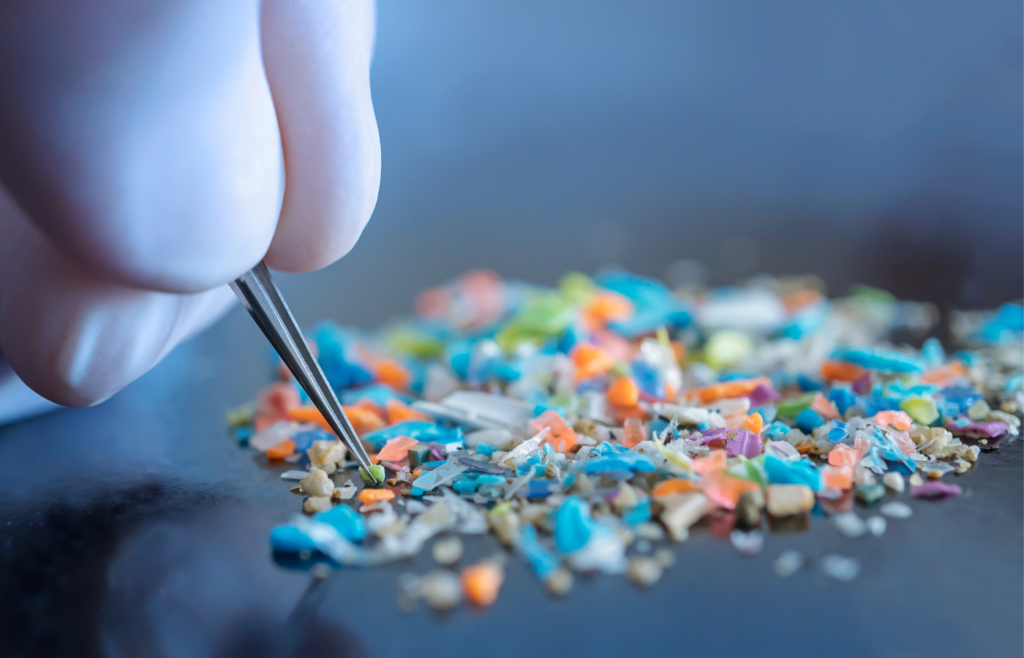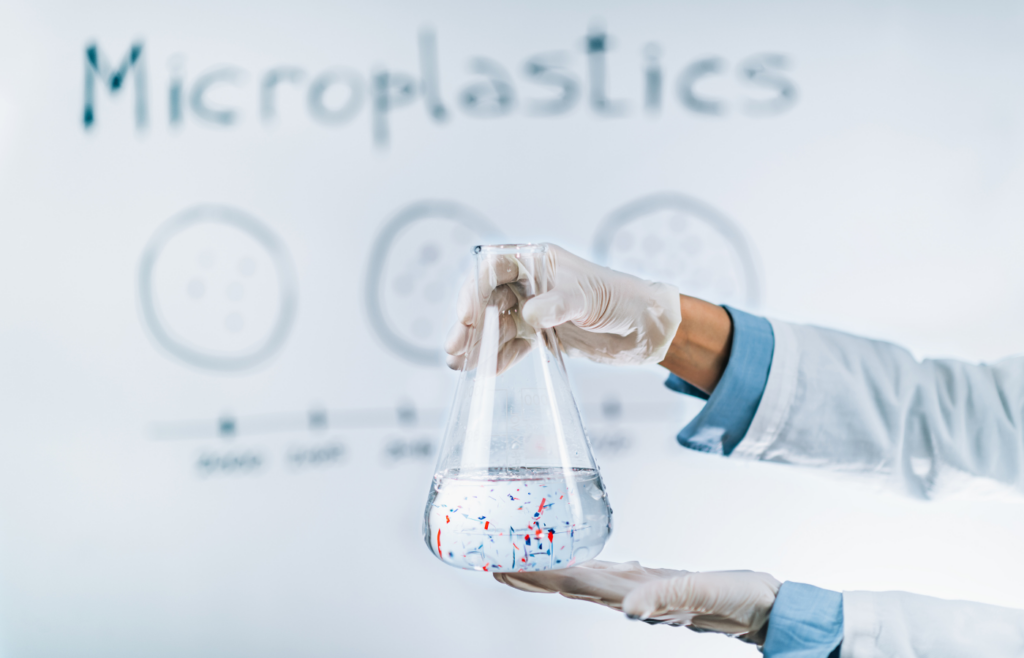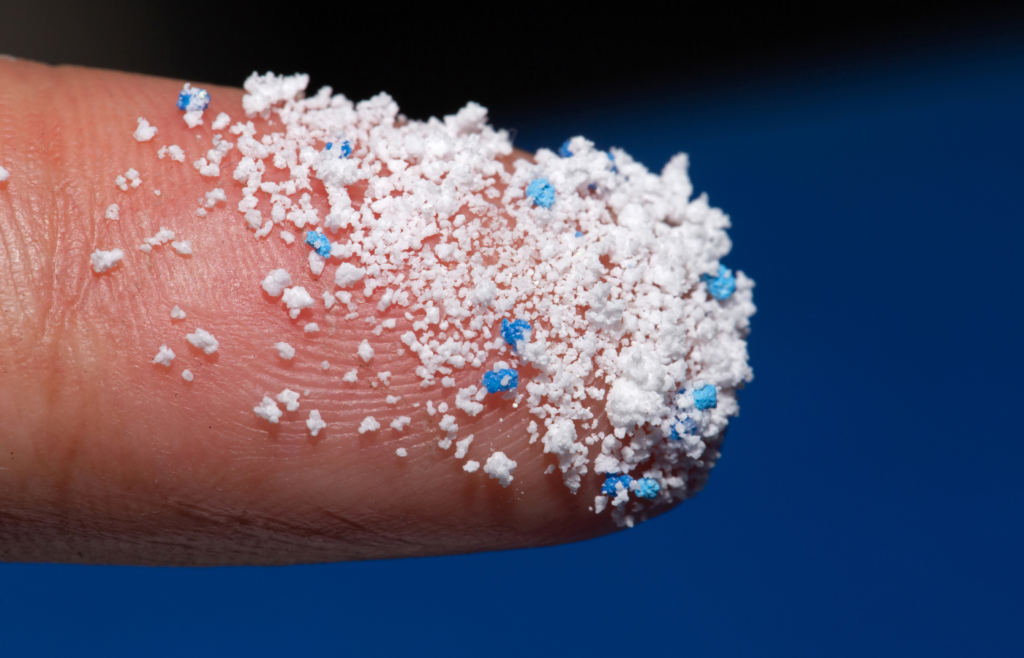Beneath the surface of our oceans, rivers, and even within the air we breathe, an invisible threat looms large – microplastics. These minuscule particles, often unseen by the naked eye, have permeated every corner of the globe, posing a significant environmental and human health risk.
In this AIC Insight, we explore the world of microplastics to find out the dangers they pose to humans and ecosystems. We’ll also look at the strategies that organisations employ to collect these tiny yet pervasive contaminants.
What are Microplastics?

- Definition and Sources
Microplastics are microscopic particles of plastic, typically measuring less than 5 millimetres in size. They originate from various sources, including the breakdown of larger plastic debris, microbeads in personal care products, synthetic fibres shed from clothing, and even the degradation of larger plastic items. The pervasive nature of these particles raises concerns about their ubiquity in the environment. - Types of Microplastics
Microplastics come in different forms, classified into two main categories: primary and secondary. Primary microplastics are intentionally manufactured at a microscopic scale, such as microbeads in cosmetics and pellets used in industrial processes. Secondary microplastics result from the degradation of larger plastic items through weathering, sunlight, and mechanical forces. - Ubiquity in the Environment
Microplastics are now found in almost every corner of the planet, from the deepest ocean trenches to the highest mountain peaks. Their ability to travel vast distances through air and water currents underscores the global nature of the issue. Studies have detected microplastics in soil, freshwater ecosystems, marine environments, and even in the air we breathe, highlighting the far-reaching consequences of plastic pollution.
The Environmental and Health Impacts of Microplastics
- Threats to Marine Life
The impact of microplastics on marine life is profound. Small marine organisms, such as plankton and filter-feeders, often mistake microplastics for food. As these particles move up the food chain, they accumulate in larger marine species, leading to bioaccumulation. The ingestion of microplastics can cause physical harm, blockages in the digestive system, and impair reproductive functions in marine life. - Terrestrial Ecosystems
Microplastics are not confined to aquatic environments; they have infiltrated terrestrial ecosystems as well. The use of plastic mulch in agriculture, for instance, can contribute to the release of microplastics into the soil. The potential impacts on soil health, plant growth, and the broader ecosystem are areas of ongoing research. - Human Health Concerns
The full extent of the impact of microplastics on human health is an evolving area of research. Recent studies have suggested that microplastics can enter the human body through various pathways, including ingestion, inhalation, and dermal exposure. The potential health risks associated with the accumulation of microplastics in human tissues are a cause for concern and warrant further investigation.
Collection Challenges: The Invisible Nature of Microplastics

- Size and Detection
The small size of microplastics presents a significant challenge for collection efforts. Traditional methods for collecting larger plastic debris, such as nets and booms, are ineffective in capturing these tiny particles. Moreover, the microscopic nature of microplastics makes their detection and quantification a complex task, requiring specialised equipment and techniques. - Persistence in the Environment
Microplastics exhibit remarkable persistence in the environment. Their resistance to biodegradation means that once released, they can persist for extended periods, continually posing a threat to ecosystems. This persistence makes the removal of microplastics from the environment a formidable challenge, requiring innovative strategies and technologies. - Dynamic Movement
Microplastics are subject to dynamic movement within environmental systems. They can be transported over long distances by wind, water currents, and even atmospheric processes. The mobility of microplastics complicates collection efforts, as they are not confined to specific regions and can spread rapidly across ecosystems.
Strategies for Microplastic Collection: Navigating the Challenges
- Innovative Technologies
In the quest to tackle the invisible menace of microplastics, innovative technologies are emerging as crucial tools for detection and collection. Advanced filtration systems, such as those utilising nanomaterials, are designed to capture microplastics from water sources. Similarly, airborne collection devices equipped with high-precision filters are being deployed to monitor microplastics in the air. - Autonomous Vehicles and Robotics
The use of autonomous vehicles and underwater robotics offers a promising avenue for microplastic collection in marine environments. These technologies can navigate challenging terrains, survey large areas, and collect samples with precision. Autonomous vehicles equipped with sensors and cameras can target areas with high concentrations of microplastics, providing valuable data for researchers and facilitating targeted collection efforts. - Citizen Science Initiatives
Engaging the public in microplastic collection efforts through citizen science initiatives is a powerful strategy. Community members, equipped with simple sampling kits, can contribute valuable data on the presence of microplastics in their local environments. These initiatives not only expand the geographical scope of data collection but also raise awareness and foster a sense of collective responsibility. - River and Coastal Clean-Up Programs
Rivers and coastal areas are primary pathways for the transport of microplastics from land to sea. Clean-up programs focused on these critical zones can help intercept and capture microplastics before they reach open water. Deploying river booms and strategically placed collection systems in coastal areas can be effective in mitigating the release of microplastics into marine ecosystems.
Policy and Regulatory Measures

To address the issue of microplastics comprehensively, policy and regulatory measures play a pivotal role. Governments and international bodies are recognising the need for regulations that restrict the use of microplastics in consumer products, such as personal care items. Additionally, policies promoting the responsible management of plastic waste and incentivising sustainable alternatives contribute to reducing the input of microplastics into the environment.
Circular Economy and Plastic Waste Reduction
A shift towards a circular economy is fundamental to addressing the issue of microplastics at its source. The concept of a circular economy focuses on reducing waste by promoting recycling, reusing materials, and minimising the consumption of single-use plastics. By adopting circular economy principles, societies can decrease the overall production of plastic, thereby reducing the potential for microplastics to enter the environment.
International Collaboration and Research
Microplastics are a global challenge that requires international collaboration. Research initiatives, collaborative studies, and information-sharing among countries contribute to a comprehensive understanding of the sources, distribution, and impact of microplastics. Joint efforts help develop standardised methodologies for detection and collection, ensuring the reliability and comparability of data on a global scale.
Education and Public Awareness
Education plays a pivotal role in addressing the issue of microplastics. Public awareness campaigns, educational programs in schools, and outreach initiatives inform individuals about the sources and impacts of microplastics. By fostering a deeper understanding of the issue, education empowers individuals to make informed choices that contribute to the reduction of microplastics in their daily lives.
Illuminating the Path Forward

The invisible threat of microplastics requires collective action, innovation, and a multifaceted approach. As we navigate the complexities of detection and collection, the strategies employed must be adaptive, technologically advanced, and guided by a commitment to environmental stewardship.
From the development of innovative technologies to engaging communities in citizen science initiatives, the fight against microplastics is a dynamic and evolving endeavour. As policies, regulations, and international collaborations gain momentum, there is hope that the invisible menace of microplastics can be unveiled, mitigated, and ultimately eliminated.
For more news & insights, stay tuned to the AIC website.

